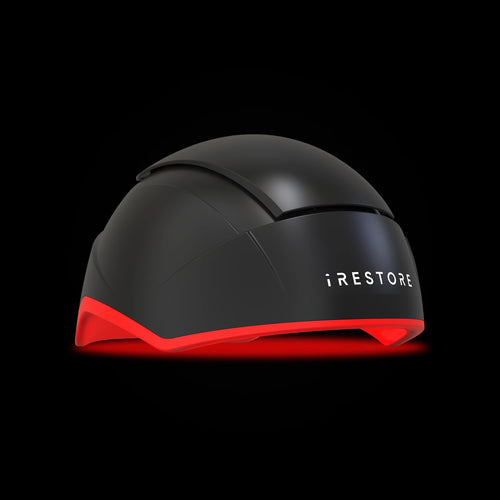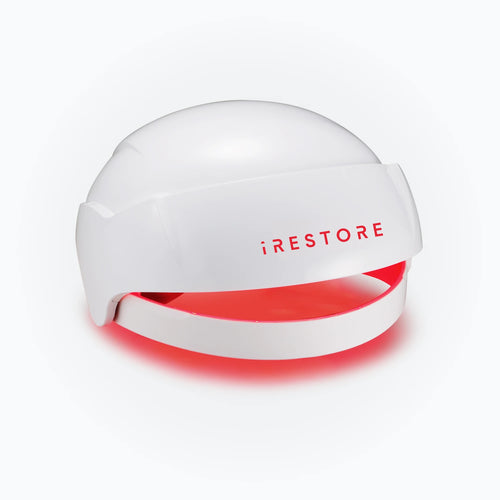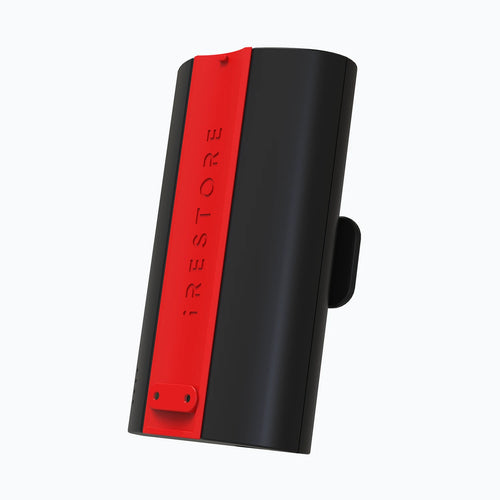Healthy hair care is about more than choosing the right shampoo or conditioner. The real foundation of strong, resilient hair begins with understanding your hair itself and how it naturally functions. One of the most overlooked aspects of this is hair porosity, which plays a central role in how hair interacts with products and treatments.
If you’ve struggled with dryness, frizz, or treatments that never seem to work, the answer may come down to your hair porosity. Understanding this hidden factor can transform the way you care for your hair and improve the effectiveness of treatments like red light therapy.
What Is Hair Porosity?
Hair porosity refers to your hair’s ability to absorb and retain moisture, oils, and treatments. It depends on the condition of the hair, the protective outer layer of each strand. Imagine the cuticle like roof shingles: when tightly sealed, moisture has trouble getting in, but when raised or damaged, moisture gets in easily but also escapes quickly.
Porosity isn’t tied to curl pattern or thickness; it’s influenced by genetics, environment, and lifestyle habits. Frequent heat styling, coloring, and chemical treatments often raise porosity, while naturally resistant cuticles stay low-porosity.
Understanding your porosity helps you make better decisions about conditioners, oils, and advanced treatments. Instead of guessing, you’ll know exactly how your hair interacts with products and therapies, ensuring your routine supports long-term strength and hydration.
Types of Hair Porosity
Low Porosity
-
Cuticles are tightly packed.
-
Water and products tend to sit on the surface instead of absorbing.
-
Common struggles: buildup, stiffness, and longer drying times.
Medium (Normal) Porosity
-
Cuticles allow balanced absorption and retention.
-
Hair tends to be shiny, manageable, and responsive to styling.
-
Requires less maintenance but still benefits from consistent care.
High Porosity
-
Cuticles are raised, often from heat or chemical damage.
-
Hair absorbs moisture and products quickly but loses them just as fast.
-
Common struggles: dryness, frizz, and split ends.
 Each type requires a slightly different approach. While low porosity needs lightweight, penetrating treatments, high porosity thrives with rich, sealing products. Medium porosity falls somewhere in between, benefiting most from balanced routines. Recognizing where you fall on this spectrum gives you the foundation for choosing care that actually works.
Each type requires a slightly different approach. While low porosity needs lightweight, penetrating treatments, high porosity thrives with rich, sealing products. Medium porosity falls somewhere in between, benefiting most from balanced routines. Recognizing where you fall on this spectrum gives you the foundation for choosing care that actually works.
How to Test Hair Porosity at Home
Determining your hair’s porosity doesn’t require a lab, it can be done easily at home with a few quick tests:
-
Float Test: Place a clean strand of hair in a glass of water.
-
Floats = low porosity
-
Slowly sinks = medium porosity
-
Sinks quickly = high porosity
-
Slip Test: Run your fingers from tip to root.
-
Smooth = low porosity
-
Slight texture = medium porosity
-
Rough or bumpy = high porosity
-
Spray Test: Mist water onto dry hair.
-
Droplets bead on the surface = low porosity
-
Absorbs immediately = high porosity
These quick checks help you understand your hair’s natural behavior and guide your decisions when selecting treatments, styling products, and therapies like red light.
Why Hair Porosity Matters for At-Home Hair Care
Porosity shapes how your hair interacts with every product and treatment. For example:
-
Low porosity hair resists absorption, so lightweight serums, steam, or gentle heat help treatments penetrate better.
-
Medium porosity hair is the easiest to maintain, responds well to balanced hydration and protein care.
-
High porosity hair requires reparative products and sealing oils to prevent constant moisture loss.
This is where iRESTORE’s FDA-cleared red light therapy stands out. By delivering therapeutic wavelengths directly to the scalp, iRESTORE stimulates blood flow, energizes hair follicle cells, and supports stronger growth regardless of porosity type. With more than 500K satisfied users, iRESTORE bridges the gap between at-home convenience and professional-grade results.
Understanding your porosity allows you to pair red light therapy with the right products, maximizing absorption and ensuring your hair gets the nutrients and stimulation it needs to thrive.
How to Use Red Light Therapy for Best Results
Consistency is the key to success with red light therapies like exercise for your hair follicles. Here’s how to get the most out of your device:
-
Frequency: Use your device 3–4 times per week for 20 minutes.
-
Preparation: Always start with a clean, dry scalp to allow the therapeutic light to reach follicles effectively.
-
Patience: While some notice changes in thickness or reduced shedding after a few months, full results typically take 6–12 months.
-
Combine with care: Support therapy with proper nutrition, hydration, and sulfate-free shampoos to further enhance outcomes.
Many people track progress with monthly photos. This helps capture subtle improvements that may not be obvious day-to-day and keeps motivation high. Red light therapy is not a quick fix, but with steady use and supportive care, it can promote long-term improvements in scalp health and hair strength.
Is Red Light Therapy Safe?
Red light therapy is generally safe, non-invasive, and drug-free. Most users only feel a mild warming sensation during sessions.
Devices like iRESTORE are FDA-cleared, which means they’ve been reviewed for both safety and effectiveness. This adds reassurance compared to unregulated devices on the market.
That said, results vary depending on factors like hair porosity, scalp condition, and genetics. People who are pregnant, breastfeeding, or taking medications that increase light sensitivity should consult a healthcare professional before use.
Stronger, Healthier Hair Starts with Porosity
By understanding your hair porosity and using treatments like red light therapy, you can build a care routine that works with your hair, not against it, leading to stronger, healthier strands over time.
By combining knowledge of porosity with consistent care, you create a personalized routine that works with your hair instead of against it, laying the foundation for healthier, more resilient strands for years to come. Confidence Restored!
FAQs
1. Can red light therapy help all hair porosity types?
Yes. Whether you have low, medium, or high porosity hair, red light therapy targets the follicles at the scalp level. Since porosity mainly affects how hair retains moisture, it does not limit the effectiveness of follicle stimulation through red light therapy.
2. How do I know if red light therapy is working for me?
Progress can be tracked through reduced shedding, increased hair thickness, and new growth along thinning areas. Many users find it helpful to take monthly photos to measure subtle changes over time.
3. Can I combine red light therapy with other hair care products?
Absolutely. In fact, pairing red light therapy with products suited to your porosity type such as lightweight moisturizers for low porosity or sealing oils for high porosity can enhance results.
4. Who should avoid red light therapy?
Red light therapy is generally safe, but people who are pregnant, breastfeeding, or taking photosensitive medications should consult a healthcare professional before use.
Disclaimer: The iRESTORE blog is for informational purposes only and is not intended to replace professional medical advice or treatment. Please do not ignore professional guidance because of information you’ve read here. If you have concerns about your hair or skin health, we encourage you to consult a qualified healthcare professional.



















